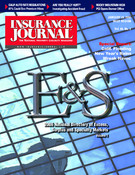Insurers’ estimates say 61 percent of California drivers could pay more.
Concern continues to build against California Insurance Commissioner John Garamendi’s plan to impose new regulations for determining auto insurance rates. At the Department of Insurance’s Auto Rating Factors Workshop, held January 12, several insurance associations indicated that proposed changes to how auto rates are set would create artificial subsidies and market dislocation.
“We’re very concerned about the impact the regulations would have on our customers,” said Sam Sorich, president of the Association of California Insurance Companies. “We have we asked an actuary to look at how the regulations would impact California drivers, and the estimate he came up with was 61 percent would pay more than they are paying today. In our view, the new regulations move away from the principal that insurance rates should be based on risk of loss.”
Fixing unfair rates
On Dec. 22, 2005, Garamendi announced he would be issuing new regulations to change how auto rates are set. The rules would make three mandatory factors on which auto rates are based — driving safety record, annual miles driven and years of driving experience — have more weight than any other rating factors. That decision fits the intent of voter enacted Proposition 103, which took effect in 1988, said Norman D. Williams, assistant deputy commissioner for communication and press relations for the Commissioner.
In addition to the three rating factors mentioned in Proposition 103, there currently are 16 optional factors, including ZIP code, which can be used when setting auto rates. CDI’s office said they received petitions from consumer groups and cities saying that basing rates on the optional factors, particularly ZIP codes, was unfair.
“The Commissioner conducted an extensive study and found the current system is not fair,” Williams said. “If you’re a bad driver living in good ZIP code, you’re getting a break. If you’re a good driver living in a ZIP code insurers don’t like, you’re paying too much.”
Williams said the new regulations will allow “drivers to pay a true rate — what he or she actually deserves to pay based on driving record, miles driven and years of experience.”
More harm than help
However, insurance associations say the proposed regulations would be detrimental, rather than beneficial. Decreasing the importance of location — e.g. ZIP code — would force consumers who live in rural areas to subsidize coverage for people who live in more densely populated areas, they say.
“A consumer’s insurance premium should be correlated to the frequency and severity of his or her potential risk of loss exposure,” said Christian John Rataj, western states affairs manager for the National Association of Mutual Insurance Companies. Geographic-based risk of loss variables include areas carrying higher risks of damage or loss due to events such as weather patterns, criminal activity such as auto theft or vandalism, or road conditions. “Actuarial studies have shown that automobile accidents and thefts occur more frequently and with greater severity in urban areas, so it is only fair and logical for those consumers to pay premiums reflecting this higher potential for loss,” he said.
At the workshop, “industry testimony was offered by actuary Bob Downer, who provided clear actuarial evidence how the proposed regs are flawed and that significant dislocation would occur,” said Ken Nigohosian, executive director for the Alliance of Insurance Agents and Brokers.
According to IBA West General Counsel Steve Young, his organization is concerned that although any changes in rating rules would be revenue neutral to insurers, they could produce significant marketplace dislocation, which agents and brokers would suffer the brunt of trying to explain to customers. Downer’s research indicated the Commissioner’s plan could increase average rates in 52 of the state’s 58 counties, Young said.
Nevertheless, “this is an issue of fairness,” Williams said. “What insurers are not telling people is they are paying too much today. We’re certainly concerned about people who see an increase in their rates. Companies will not be able to increase rates arbitrarily,” he said. But for drivers whose rates should legitimately increase, “there will be a grace period for people who do see rate increases to prepare,” Williams noted.
A formal hearing on the proposed regulations will be held Feb. 24 in San Francisco.
Meanwhile, the CEO of Mercury General is trying to get a voter initiative on the November ballot that would undo Proposition 103. (See related story on page 12.)
Topics California Auto Legislation Pricing Trends
Was this article valuable?
Here are more articles you may enjoy.


 Update: Verizon Says Service Restored After Thousands Affected by Outage
Update: Verizon Says Service Restored After Thousands Affected by Outage  Adjusters Launch ‘CarFax for Insurance Claims’ to Vet Carriers’ Damage Estimates
Adjusters Launch ‘CarFax for Insurance Claims’ to Vet Carriers’ Damage Estimates  Grandson Not Covered Under Grandma’s Home Insurance
Grandson Not Covered Under Grandma’s Home Insurance  Warburg Mulls $1 Billion Sale of London Insurance Broker McGill
Warburg Mulls $1 Billion Sale of London Insurance Broker McGill 


